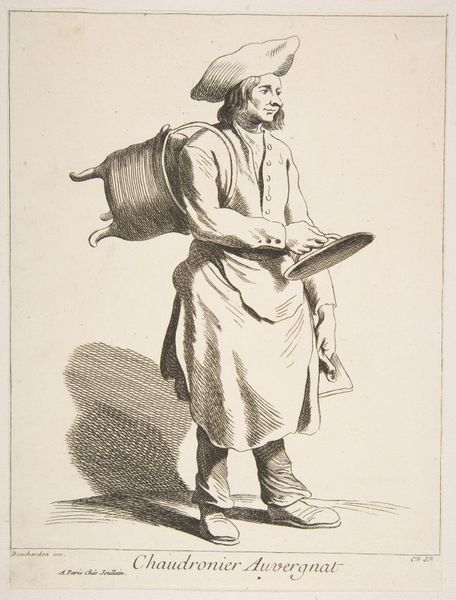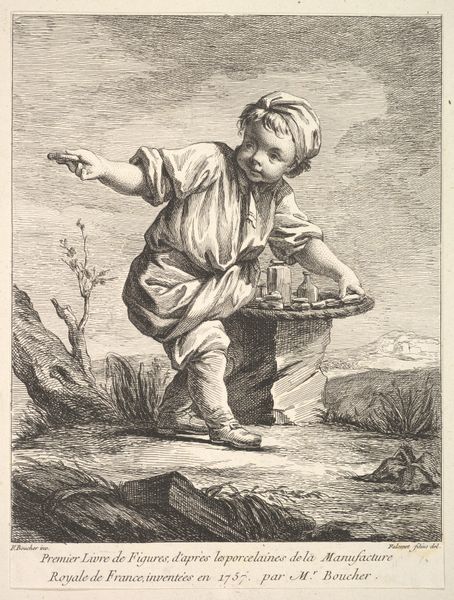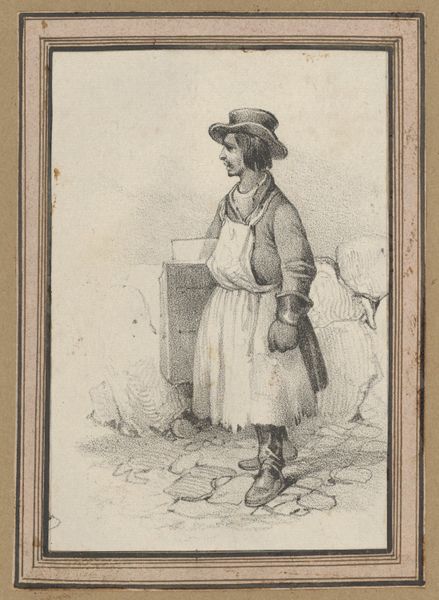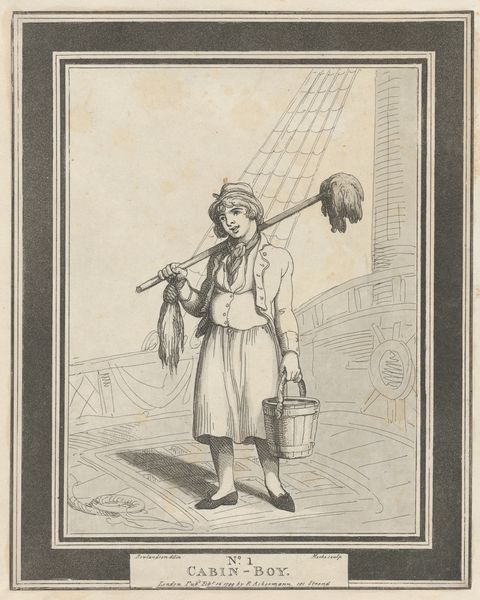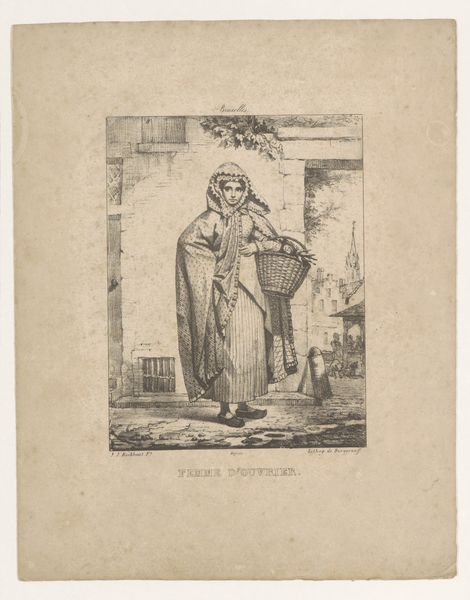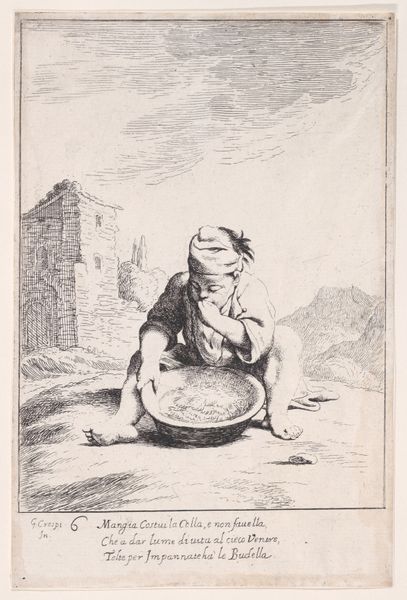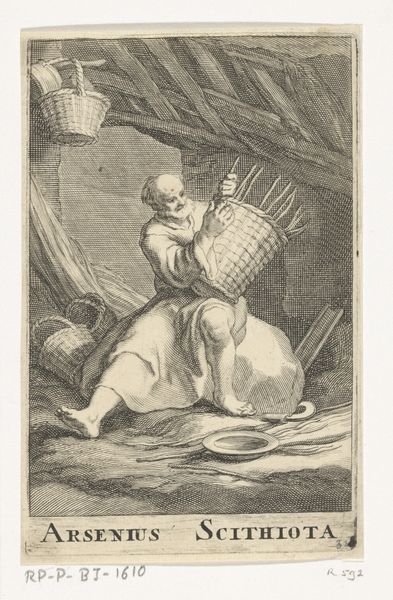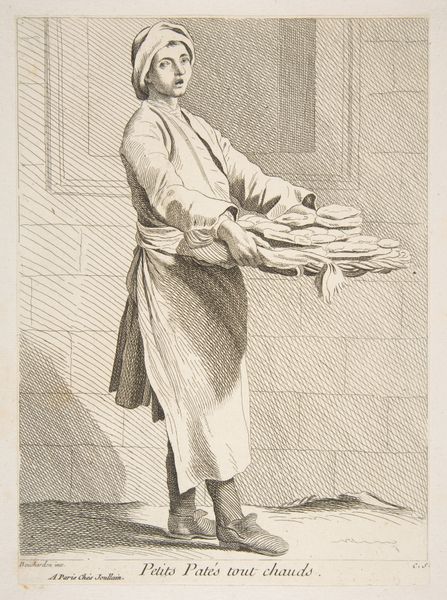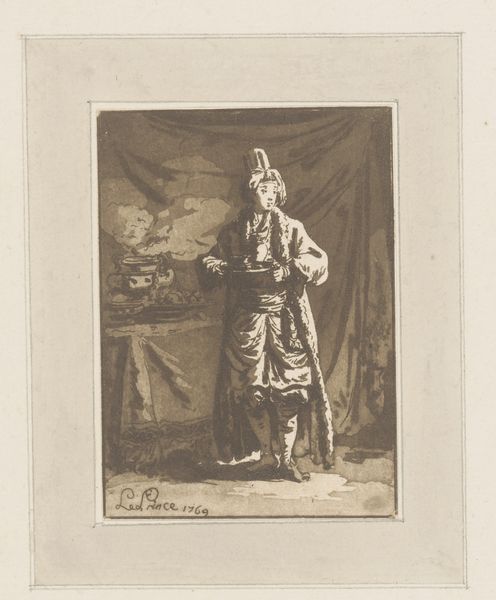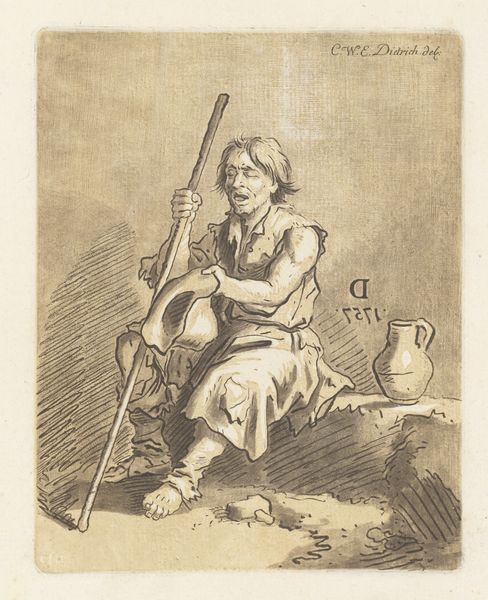
drawing, print
#
drawing
# print
#
caricature
#
caricature
#
figuration
#
romanticism
#
line
#
genre-painting
Dimensions: Sheet (trimmed and inset): 10 1/4 × 8 1/16 in. (26.1 × 20.4 cm)
Copyright: Public Domain
Editor: This is "No. 4: Cook," a print and drawing made in 1799 by Henri Merke, currently housed at the Metropolitan Museum of Art. The figure feels like a stage character—something from a play. What jumps out at you? Curator: It’s fascinating to consider the image as a form of social commentary. Prints like these were often circulated widely, shaping public perception of various trades and social classes. Notice how the cook's wooden leg is emphasized; how might that resonate with viewers in 1799, a period of revolution and naval conflict? Editor: That's interesting. It hadn’t occurred to me to read into the cook's disability. Does it serve to elicit sympathy, or is there a satirical edge at play? Curator: It's likely both. Caricatures in this era often employed exaggeration, and disability could be used to evoke both pity and ridicule. Consider the audience for this print; it would have been consumed within a specific political and cultural context. Also, prints had a didactic purpose for people unable to view the artwork physically, and who consume this image in different spaces? How does the consumption inform the meaning? Editor: So, it’s not just about the individual cook depicted, but also the social narratives and power dynamics surrounding labor and disability in late 18th-century London. The piece asks who gets to consume art and how this consumption impacts cultural significance? Curator: Precisely. The print serves as a portal into a specific moment, revealing how identities were constructed and negotiated in the public sphere. Editor: I now appreciate the role of social history and political context in interpreting seemingly simple genre scenes. It really opens up a whole new avenue for understanding the work. Curator: Absolutely, and it underscores how museums actively shape our understanding of the past. Examining that relationship is critical.
Comments
No comments
Be the first to comment and join the conversation on the ultimate creative platform.

